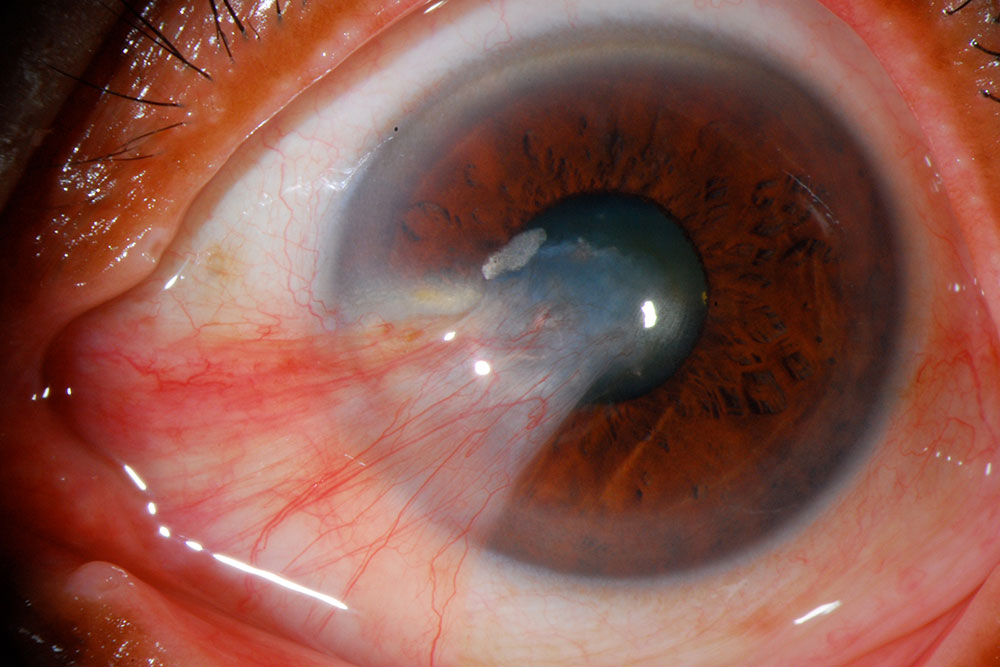Pterygium is an elevated, wedged-shaped bump on the eyeball that begins on the sclera (white of the eye) and can invade the cornea. Although Pterygia are benign growths, they can cause discomfort, blurry vision, and can permanently disfigure the eye.
Commonly known as “surfer’s eye”, you don’t have to be a surfer to suffer from pterygium. However, prolonged exposure to the sun’s harmful UV rays, especially when you are on water, increases your risk for this condition. Other risks that may lead to development or growth of pterygia include dust, wind and having light skin and light eyes.
Signs and Symptoms of Pterygia
Pterygia can affect one or both eyes. They usually occur on the side of the eye closer to the nose.
Symptoms may be non-existent with smaller pterygia. However, large or growing pterygia may cause a burning, itchy, or gritty sensation as if there is something foreign in the eye. Your eyes may also become red and inflamed. In more serious cases, pterygium can invade the cornea and distort the shape of the front surface of the eye and affect vision by causing astigmatism and higher-order aberrations.
Whether or not you need treatment depends on the size, symptoms and causes of your pterygium. Small pterygium may not need treatment, but should be monitored to prevent scarring because of the risk of vision loss; and a mild steroid eye drop or lubricant may be prescribed to reduce swelling and redness.
In more severe cases when surgery is required pterygium surgery may be performed. This procedure typically lasts for no more than 30 minutes. You will need to wear an eye patch the first day following surgery.
Recurrence is not uncommon with pterygia with recurrence rates have reached up to 40%. There has even been research suggesting high rates of recurrence in patients that have had a pterygia removed during the summer months, possibly due increased exposure to sunlight.
To prevent a recurrence following surgical removal, your eye surgeon may glue or suture a small piece of surface eye tissue onto the affected area – this is called autologous conjunctival autografting and has been shown to reduce the risk of recurrence down to 10-15 percent.
If you experience any of the signs or symptoms mentioned above or notice any type of growth on the surface of your eye, make an appointment so see an ophthalmologist immediately.







